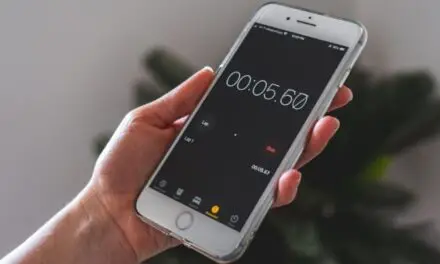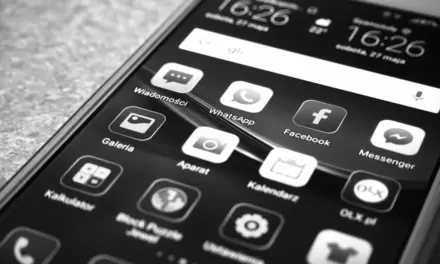Fitbit wearables and smartwatches are primarily designed for health and fitness. Unlike traditional Smartwatches, such as the Apple Watch and the Samsung Galaxy Watch, where health and fitness are secondary to other smartwatch innovations, Fitbit has always been geared toward fitness and health.
When it comes to Fitbit, there are often a lot of questions concerning kayaking and paddleboarding because that seems to be the lone, glaring blindspot in the Fitbit arsenal of health and fitness trackers based on various sports or activities.
Most Fitbit wearables and smartwatches track many activities, such as kickboxing, pilates, weight lifting, golf, hiking, treadmills, walking, running, circuit training, and more.
But does Fitbit track kayaking or should you look elsewhere?
Table of Contents
Can A Fitbit Track Kayaking?

Fitbits are not the best option to track kayaking because the pedometers they use find it difficult to track movement over water. This makes it hard for your Fitbit to accurately track the distance you travel and the calories you burn during kayaking.
If you dig in deep with the Fitbit community, you will find that the closest thing that Fitbit has to kayaking is “elliptical”. According to the community, it’s the only exercise (and it’s also only found on the Fitbit Ionic) that mimics kayaking enough to be worthwhile.
So, if you have an Ionic Fitbit tracker and want to track your kayak outings, you should try the elliptical option and see if it works for you. Otherwise, you are going to need to rely more heavily on your smartphone or another smartwatch or wearable device.
The second problem with Fitbit is that it allows you to add new exercises that don’t come with preinstalled apps. Sounds great, right? So, what’s the deal? The deal is, that kayaking is nowhere on the list of activities that you can add to your Fitbit device.
If you already own a Fitbit, especially if you just purchased the thing, that puts you between a rock and a hard place if kayaking is one of your favorite activities. You can either return your Fitbit if that’s a viable option, get another brand of smartwatch, or use your phone.
Why Fitbits Don’t Track Kayaking Very Well
There’s really no technical reason that a Fitbit can’t track kayaking very well, it’s just that the Fitbit powers that be have decided on a more land-based approach with the Fitbit and it lacks the GPS features you would find on a Garmin.
Since it doesn’t have any kayaking routines, all you can get from it is the basic health monitor features that you expect from a Fitbit device wherever you’re at, including heartbeat, blood oxygen, stress levels, etc. Of course, some of the health features also depend on what Fitbit you are using at the moment.
There is one app that supports stand-up paddling (SUP). It’s a Fitbit app that tracks things such as your heart rate, your speed over the water, your fastest speed, distance traveled, and total strokes. You may be able to get this app to work as a reasonable substitute.
Even when you are using the SUP app, Fitbits just experiences a lot of problems when trying to track activities over the water. It’s the same situation on a bike. According to Fitbit, they are working on the issue.
They very well should be because the lack of water-based activities on a Fitbit puts them woefully behind all of the other smartwatches that operate on the water very well, such as Garmin, Apple, Samsung, and Amazfit.
Since Fitbit can calculate your calorie loss but does so based on the distance traveled, it kind of makes it useless when it can’t track your distance traveled over water. It’s a frustrating phenomenon with SUP as well.
Related Article: Will A Fitbit Work In Your Pocket? (All You Need To Know)
Apps To Use Instead Of A Fitbit To Track Kayaking
You can use apps to track kayaking but that doesn’t mean that you can leave your Fitbit at home. Even while you are on the water, Fitbit is able to track your general health statistics, as we mentioned above. You will have to use a smartphone for distance-related statistics, however.
If you are taking a phone out onto the water, you might want to use a waterproof floating case like the CaliCase. That way, if your phone goes over, it won’t sink to the bottom.
Strava
Strava is available for both Apple iPhones and Android smartphones, so you don’t have to have a specific smartphone to use it. Strava is currently at firmware 4.0 and it comes with a pretty rich set of features.
While Strava is more designed for health and fitness warriors that are heavy on the competing side of things, it will work just fine for a lazy kayak down the river on a summer afternoon.
The competitive side is actually pretty cool as well. It’s not like an online multiplayer game or anything. What the Strava app does is track how well you are doing in a certain activity in comparison to others in your area that is both using the Strava app and doing the same exercise.
If you have a Fitbit, Strava will sync to it for other activities that your Fitbit works with and basically becomes your go-to kayaking smart app in conjunction with your Fitbit device. There is a significant drawback to using Strava, however.
When you use Strava, it essentially shares all of your geolocation data with others around you that are also using Strava. If someone were of the mind of creeping on you, all they would need is the Strava app and they could essentially track your entire trip.
It sounds a bit melodramatic, but crazier things happen in the world all of the time.
Paddle Logger
Paddle Logger is a very simple app and perhaps that is where most of the appeal lies. The good thing about the Paddle Logger app is that it’s made for activities on the water, most especially kayaking and SUP.
The only downside to the app is that it is only available for iOS devices, namely your iPhone because you probably don’t bring your iPad on your kayaking trips. Paddle logger tracks calories burned based on distance traveled, along with the number of strokes and an emergency send out in case you are in trouble and don’t respond.
You can enter all kinds of information all the way down to your brand and model of paddleboard or kayak. It kind of makes the app especially personalized so you feel that it’s really working with you rather than just for you.
As we mentioned, the app is exceptionally straightforward and despite the fact that all of the features (there are many) are hidden pretty deeply, you will find that just a few minutes of playing with the app reveals just about everything you need.
You don’t have to pay a fee to download Paddle Logger, nor do you have to pay to use some of the standard features. However, if you want to access some of the more in-depth features for kayaking, those will cost in-app purchase fees. Fortunately, these are one-time fees and not recurring monthly payments.
Sportractive
Sportractive is primarily a GPS tracking app for Android devices only. However, it does have some body metrics tracking and customization options as well. You can measure your neck, waist, and hips so you can track your weight loss and track your body changes over time.
From a purely GPS standpoint, you can easily keep track of your distance traveled, speed, and highs and lows (in terms of speed), throughout each of your kayaking expeditions. Sporttractive also tracks some minor health statistics but it only does so through your wearable.
Sportractive is well-known for having very good GPS accuracy so unless you get out somewhere that you’re completely away from cell phone signal and GPS positioning, it should provide you with data feedback that is on point.
Go Paddling
Unlike the last two apps, go paddling works for both Android and iOS devices. As far as kayaking apps go, Go Paddling is one of the more popular ones available. The only drawback to Go Paddling is that it tracks kayaking statistics based on known kayaking locations.
There are thousands upon thousands of kayaking locations that are a part of the app, however, you could turn out to be that one person that likes to kayak in a secluded area that isn’t a part of the many kayak locations on the app.
Fortunately, the developers of the Go Paddling app didn’t do a one-and-done, like some app developers are prone to do. They keep up with the app and send out updates routinely. Updates include new kayaking locations as well, as patches, new features, and small details that make a difference.
So long as your location is a part of the app’s locations, it’s one of the better apps in either the Apple App store or the Google Play Store.
The Samsung Health App & Google Fit
If you use a Samsung phone and can maintain a good GPS signal during your trip, Samsung’s health app has a function for kayaking that will allow you to track your route.
For Android phones, Google Fit also has kayaking as an activity that will allow you to track and show your location on Google Maps.
Final Thoughts
If you own a Fitbit device and really want to get into kayaking, don’t feel too disappointed. If the developers at Fitbit are being honest, and there’s no reason to think they aren’t, they are hard at work adding kayaking to mix with all of their Fitbit devices on the market today.



